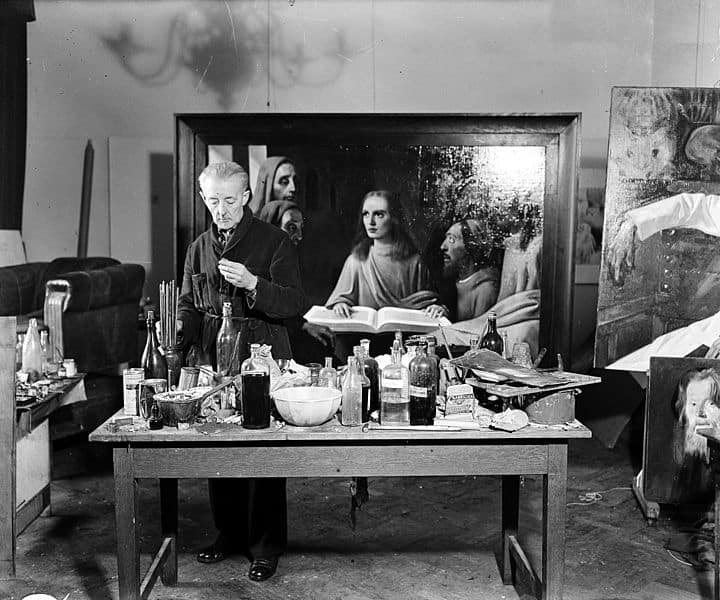Those who would attempt to create forgeries of paintings by the great masters face a daunting task, but Han van Meegeren accepted the challenge. Creating a convincing forgery requires far more than merely painting in the manner of the selected painter. Art experts employ sophisticated techniques when examining a piece to confirm its authenticity. The forger must anticipate them all and create a piece which is above suspicion in order to draw the interest of potential collectors. Still, pieces continue to appear, allegedly “lost” creations of the great masters such as Johannes Vermeer, Rembrandt, and Frans Hals. Along with the paintings themselves, false provenances describe sometimes mysterious pasts.

In the first half of the 20th century, several “lost” paintings from the Dutch Masters appeared in Europe, including some from the now nearly legendary Johannes Vermeer. They underwent the scrutiny of experts and after being designated genuine hung in prestigious museums and galleries. Some were sold to private collectors. One such collector proved to be one of the most notorious and infamous persons of history, Germany’s Hermann Goering. A Vermeer purchased by Goering sold for the highest price than ever paid for a single painting. After the war, the painting’s true history, as well as that of other forgeries created by its painter emerged. The painter, Han van Meegeren, confronted art experts who claimed the painting was a genuine Vermeer. Meegeren had to prove it was a forgery, created by him, or face the death penalty for collaborating with the enemy during World War II. Here is his story.

1. Han van Meegeren failed as a painter in pre-World War II Europe
Han van Meegeren suffered through a difficult childhood, his father contemptuous of the son’s desire to become a painter. As a young child, his father forced van Meegeren to scrawl over and over on a blackboard, “I am nothing. I know nothing, I am capable of nothing”. Yet his desire to paint remained, despite his father’s efforts to quash it. Van Meegeren developed a passion for the painters known collectively as the Dutch Masters. His father forced him to study technical subjects, and van Meegeren eventually trained as an architect, though he refused to take the required final examination for his degree. Van Meegeren broke from his father and studied drawing and painting at The Hague in 1913, receiving a Gold Medal for one work.
In 1914 he received a diploma from the Royal Academy of Art, The Hague, which allowed him to work as an art teacher. He worked as a teacher’s assistant, and to generate additional income for his young family (he married in 1912) he drew artwork for advertisements, greeting cards, and postcards. Following World War I, he traveled throughout Europe, painting and drawing still-life and wildlife. He exhibited his work in several galleries. Gradually his reputation as a skilled portrait painter spread throughout Europe. By the mid-1920s he also acquired a reputation as an expert in the styles of the great masters of Holland’s Golden Age of painting. A divorce ended his first marriage in 1923. Around that time van Meegeren began to create the first forgeries which eventually brought him great wealth, as well as great trouble.
